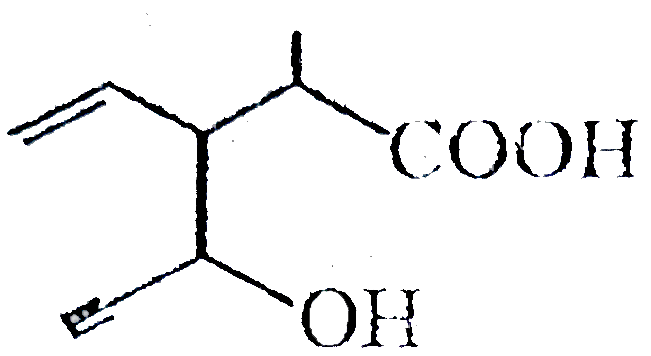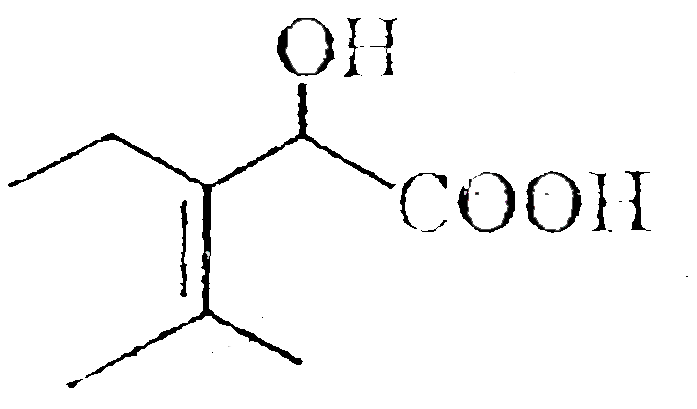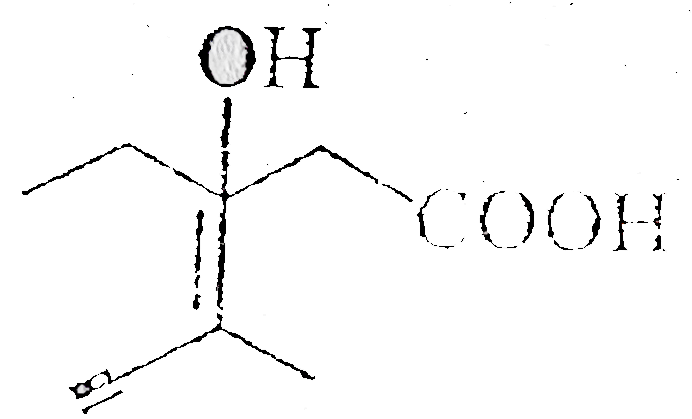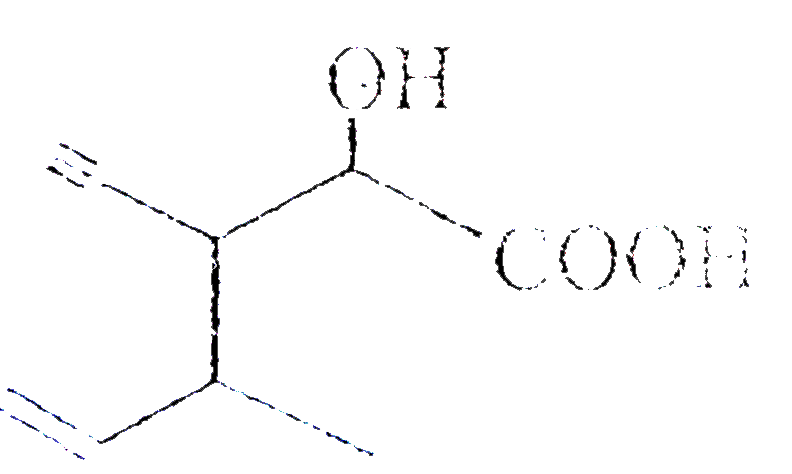Compound I and II can be distinguished by using reagent.
(I)4-Hydroxy-4-methylpent-2-enoic acid " " (II)5-Hydroxypent-2-ynoic acid
A
NaHCO3
B
Br2/H2O
C
HCl/ZnCl2 (anhydrous)
D
Cu2Cl2/NH4OH
Text Solution
The correct Answer is:C
HC∣HOOC=C∣H−CH3∣C∣OH−CH3(I) " " C∣HOOC≡C−CH2−CH2∣OH(II)
(I) gives immediate turbidity by Lucas reagent and (II) does not give turbidity appriciably.
|
Topper's Solved these Questions
- STRUCTURAL IDENTIFICATIONBook:RESONANCE ENGLISHChapter:STRUCTURAL IDENTIFICATIONExercise:Advanced level Problems (Part-III)
Explore 12 Videos
- STRUCTURAL IDENTIFICATIONBook:RESONANCE ENGLISHChapter:STRUCTURAL IDENTIFICATIONExercise:Advanced level Problems (Part-I)
Explore 29 Videos
- STEREOISOMERISMBook:RESONANCE ENGLISHChapter:STEREOISOMERISMExercise:EXERCISE (PART III : PRACTICE TEST-2 (IIT-JEE (ADVANCED PATTERN))
Explore 23 Videos
- SURFACE CHEMISTRYBook:RESONANCE ENGLISHChapter:SURFACE CHEMISTRYExercise:Section - 5
Explore 1 Video
Similar Questions
Knowledge Check
Compounds I and II can be distinguished by using reagent.
(I) -4-Amino-2-methylbut-3-en-ol
(II) -4-Amino-2,2dimethylbut-3-yn-1-olANaNO2/HClBBr2/H2OCHCl/ZnCl2 (anhydrous)DCu2Cl2/NH4OHCompounds I and II can be distinguished by using reagent.
I II4-Amino-2methylbut-3-en-2ol4-Amino-2,2-dimethylbut-3-yn-1-olANaNO2/HClBBr2/H2OCHCl/ZnCl2 (anhydrous )DCu2Cl2/NH4OH3−Ethyl−2−Hydroxy−4−methylhex−3−en−3−en−5−ynoic acid:−
A B
B C
C D
D
Compounds I and II can be distinguished by using reagent.
(I)(II)4-Hydroxy-4-methypent-2-enoic acid5-Hydroxypent-2-ynoic acid
View SolutionCompounds I and II can be distinguished by using reagent.
I II4-Amino-2methylbut-3-en-2ol4-Amino-2,2-dimethylbut-3-yn-1-ol
View SolutionDraw the structures of the following :
(I ) 3-Bromo -4- phenylpentanoic acid (ii ) Hex -2- en 4- ynoic acid
View SolutionStructure of the compund whose IUPAC name is 3-ethyl-2-hydroxy-4-methylhex-3-en-5-ynoic acid is
View SolutionStructure of the compound whose IUPAC name is 3-ethyl. 2-hydroxy-4-methyl hex-3-en-5-ynoic acid is:
View Solution

